Advertisement
Why We Still Think About Rodin's 'The Thinker,' Now Sitting Pensively At The Peabody Essex
Resume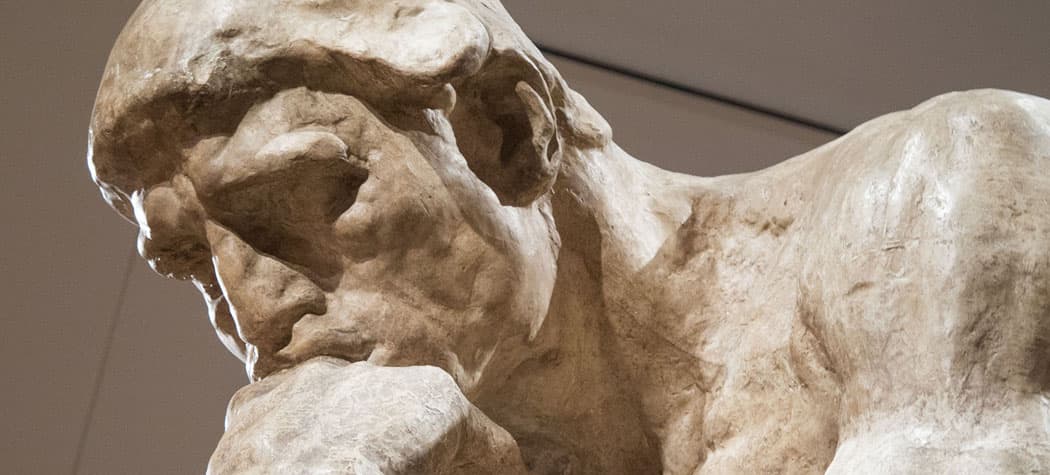
A few works of art connect so deeply with us that they are universally recognizable. There’s Leonardo Da Vinci’s "Mona Lisa" — Edvard Munch’s "The Scream" -- and one that for the next three months is right here in Massachusetts.
It's Auguste Rodin’s "The Thinker."
A monumental version of the pensive, muscle-bound figure can usually be found in Paris at the Musée Rodin, but now it's in Salem for a new collaborative exhibition at the Peabody Essex Museum titled, "Rodin: Transforming Sculpture."
Perceptions of the man depicted by Rodin have varied widely since he was conceived. Which got us thinking about why and what people have thought — and still think — about "The Thinker."
How 'The Thinker' Was Conceived
The exhibition features more than 160 sculptures by Rodin. Many have never been seen before in the United States.
The feast of Rodin — in bronze, marble, plaster and stoneware — is actually a small sampling from the artist's incredibly prolific career. But it’s safe to say the star of the show is the big guy with the knit brow and ripped muscles.
"So here he is, elevated in all his glory," Lynda Roscoe Hartigan said as she introduced me to "The Thinker." Hartigan is the Peabody Essex Museum deputy director and coordinating curator for the new show.
We were dwarfed by the colossal, six-foot-tall, hollow plaster being that loomed over us from his raised pedestal.
Hartigan explained how Rodin originally designed the figure in the 1880s to be part of a large, museum doorway piece depicting "The Gates of Hell" from Dante's "Inferno." At first, the French artist referred to the Dante sculpture as "The Poet" — but things changed for Rodin when the museum project didn't come to fruition.
"He clearly made a decision at some point that he could free that figure from the 'Gates of Hell' and create an individual sculpture," Hartigan said.
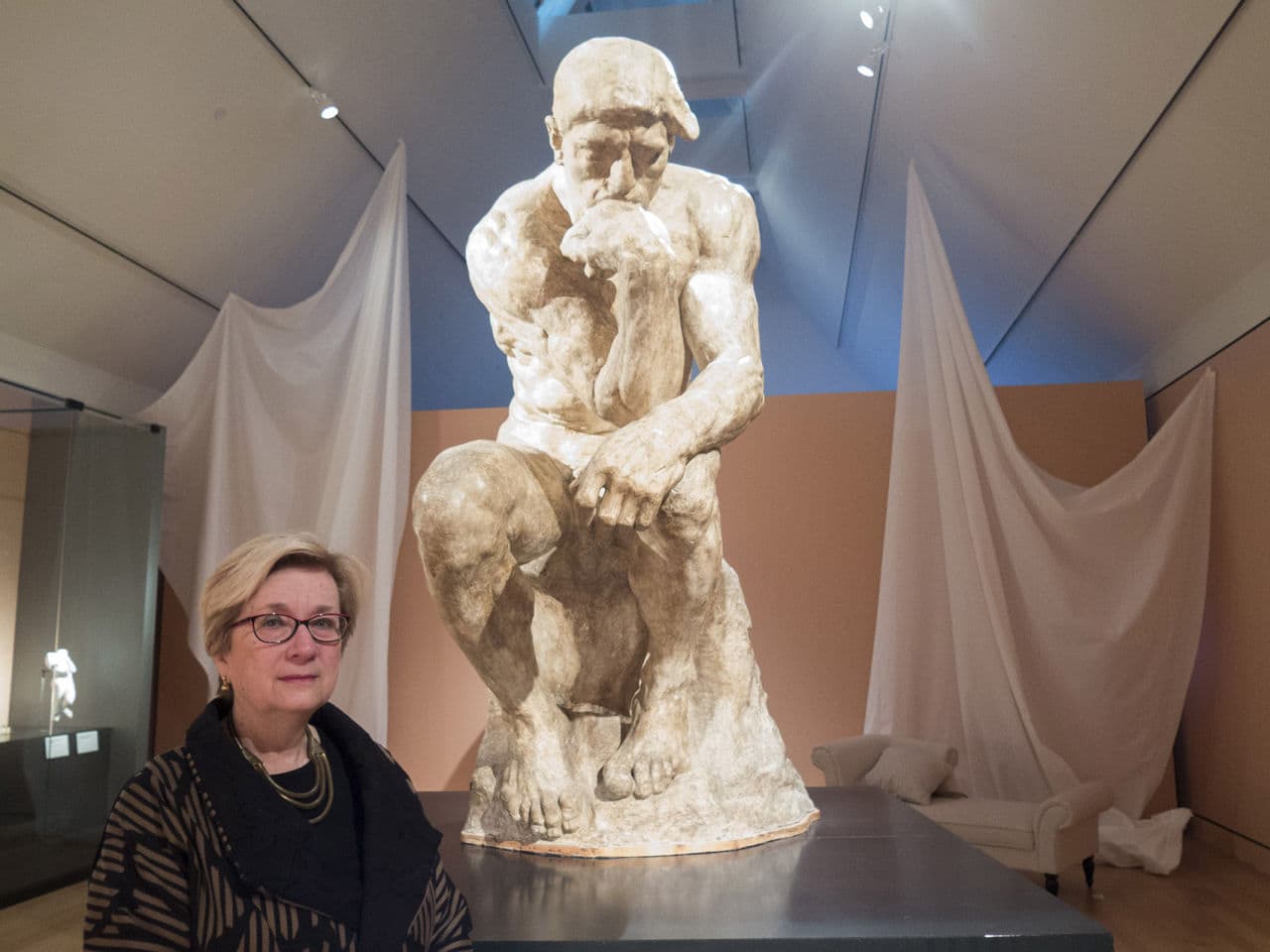
Rodin renamed it "The Thinker," and Hartigan said the provocative sculpture sparked controversy after its debut in Copenhagen in 1888.
"This was described as looking like a ‘wild orangutan.’ That it was some sort of representation of brute force, or brute manhood, as opposed to something that represented thoughtfulness," Hartigan said. "And part of it has to do with the extreme definition of the muscles. Even now looking at it, as much as we might be in awe of it, it’s actually kind of in-your-face."
An Icon Carved In Our Minds
The work was nothing like the bulk of Italian and Greek sculptures that came before, which expressed ideals of beauty, perfection, valor and harmony. In contrast, Rodin’s "Thinker" had rough surfaces and was a more realistic, perhaps even flawed, depiction of a human being.
But Hartingan said it didn’t take long for the public to connect with "The Thinker." So Rodin — who was both an innovator and a savvy business-person — made more of him in different sizes and media, including plaster and bronze.
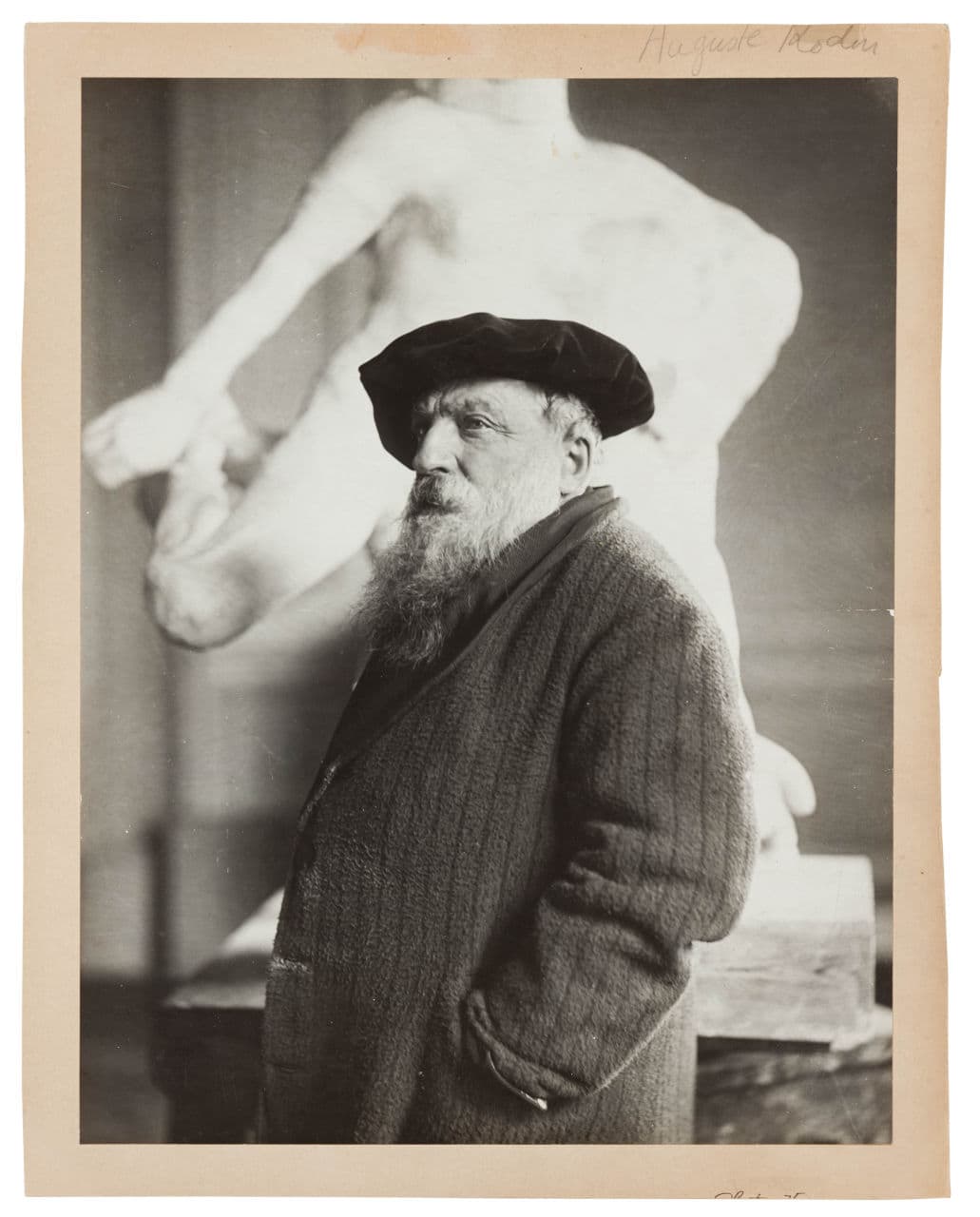
The enlarged one in this show was cast in 1903. And you can find dozens of big and smaller, 28-inch "Thinkers" worldwide, in museums and private collections.
"We may not actually even know that it's by Rodin — but the figure is iconic for many people," she mused.
"You know that chin is just dug into his hand. And he’s hunched over. And his toes are clenched on the base. He’s posed in a way that makes you wonder what’s going on. It speaks, I think, really powerfully to what can happen when someone creates an image that so many people over so many lengths of time can really respond to."
Some responses have been impassioned, surprising and disturbing.
In 1905, a man suffering from mental illness destroyed the version erected outside the Panthéon in Paris, because — as the story goes — he thought the statue was mocking him.
About a decade later the Cleveland Museum of Art acquired its own "Thinker." Then in 1970, it was blown up and severely damaged. Some people blame the radical, political group the Weather Underground, although no arrests were made. The museum continues to display the piece — damage and all.
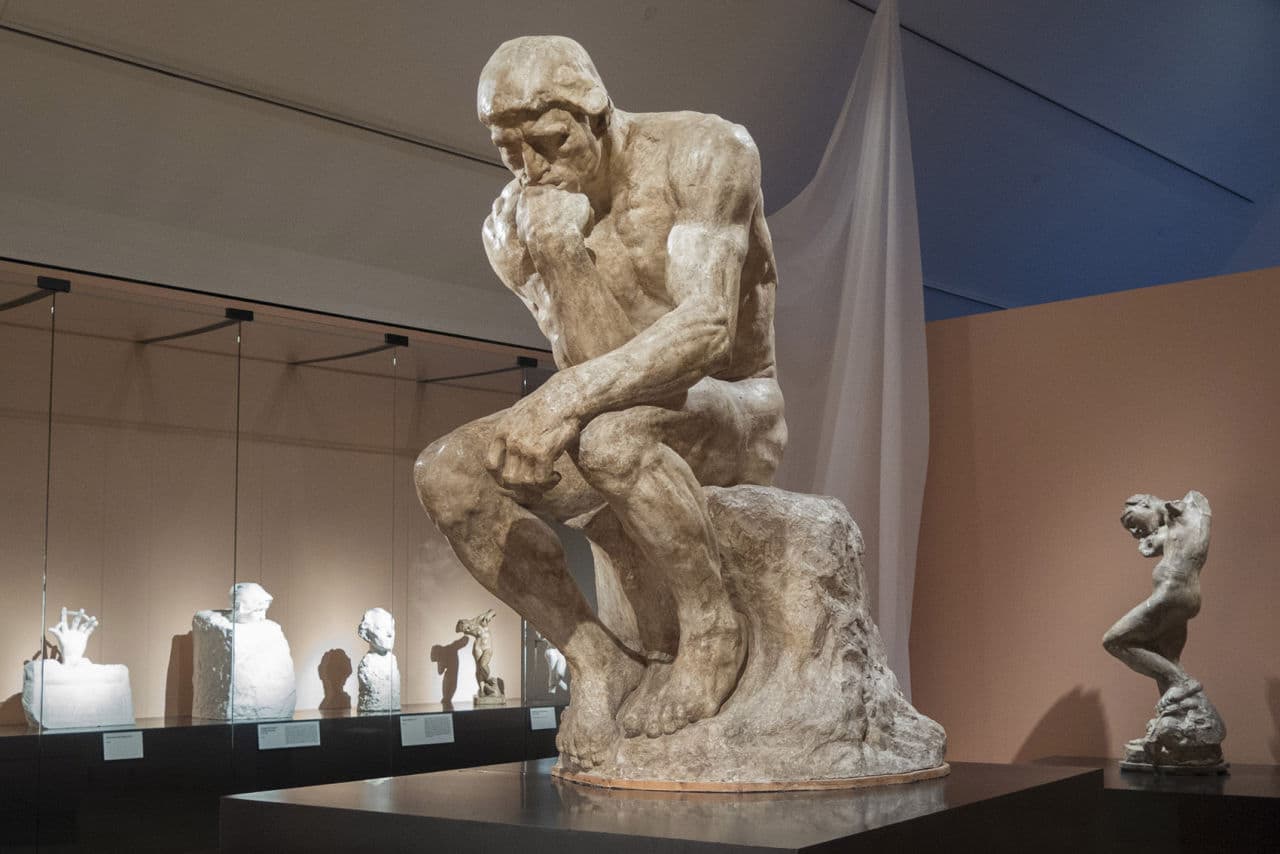
But what about people’s reactions these days?
To Hartigan, "The Thinker" represents the power of reflection and the potential for action.
"I just always look at this and half expect he’s going to stand up, walk off the pedestal, and go do whatever he was thinking about," she said.
So Hartigan sees him as a "doer." But for others, "The Thinker" could come across as depressed, sad, bored, lazy or lost, according to clinical psychologist Craig Malkin, who practices in Cambridge.
"Pretty much all we can tell because of the title is that he is thinking. And beyond that it’s anybody’s guess what exactly is going through his head and what he’s feeling," Malkin told me.
He pondered this while looking at an enlarged image of "The Thinker" on his big screen TV. Malkin is author of the book, “Rethinking Narcissism,” and blogs for The Huffington Post. For him, "The Thinker" is open to interpretation, and he believes our reactions to the sculpture tell us something about ourselves.
"People can look at him, and it's not exactly clear what he's considering, so they can project their own thoughts and feelings," Malkin said, clearly enjoying the chance to explore this notion. "If you value taking action and getting things done, you might see him as depressed, procrastinating or just stuck. And if you value thinking you might look at him — as I think Rodin intended him to be depicted — as engaged in some sort of heroic struggle of the mind."
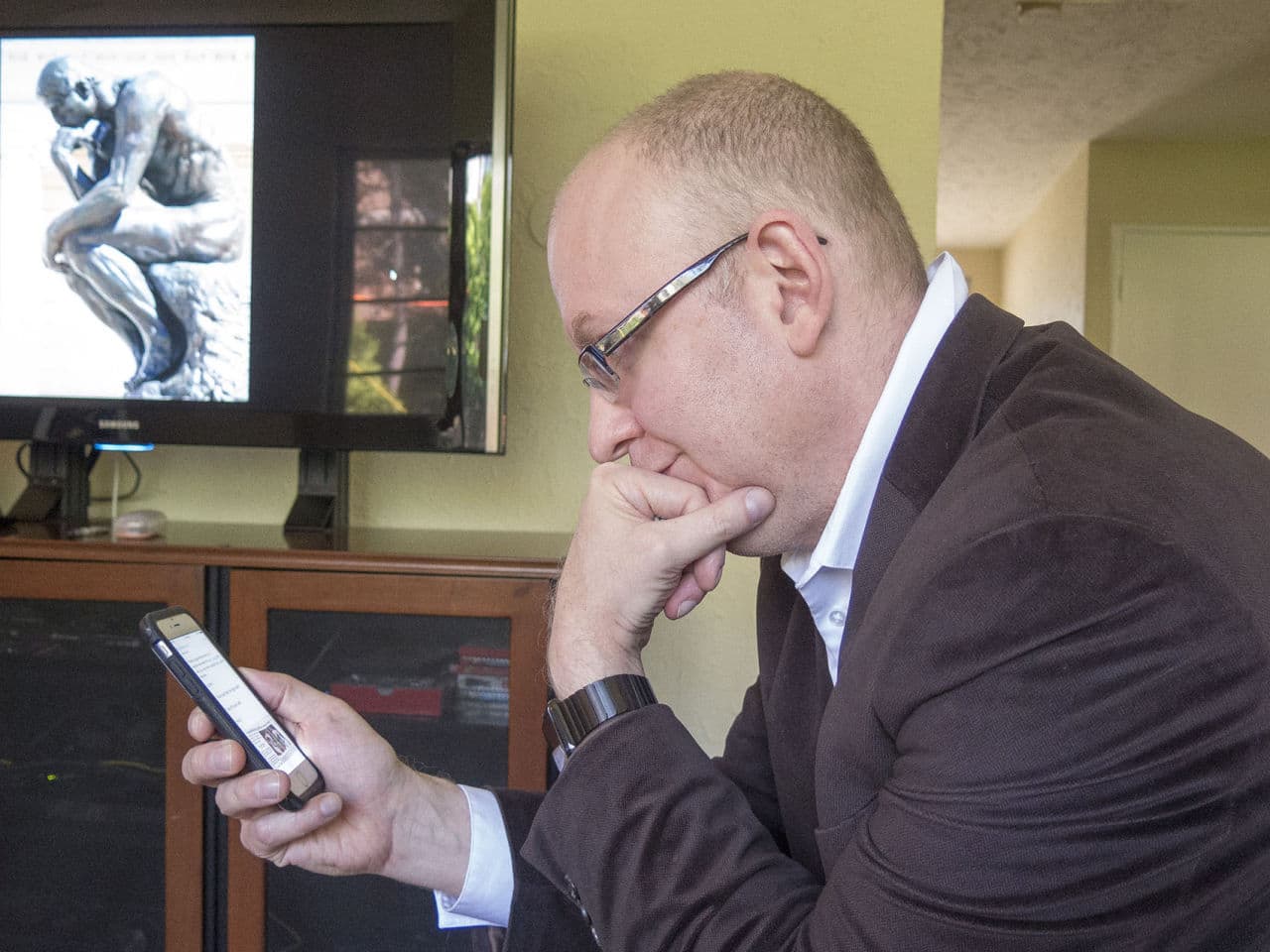
Either way, we feel strongly engaged with Rodin's piece, according to Malkin, and he said that's one of the reasons it will always speak to us, not matter what age we're in.
'Deep Contemplation' Or 'Just Daydreaming'?
At the same time, Malkin finds "The Thinker" to be a bit alien-looking in today’s buzzing, connected world where being a go-getter is so often celebrated.
"He looks strained and awkward. He’s just sitting there thinking. That's it. He's not doing anything," Malkin said. "And that’s not an unusual position to see people in — but they’re usually looking at their cell phones."
In a lot of ways Malkin sees "The Thinker" as something of a Rorschach test. And so I headed out to ask a few people in the Boston Public Garden what they think. I brought along a big, color photo, and Quincy resident Ashley Dube told me she's familiar with the sculpture's pose.
"Well often when I’m looking at my phone — [I'm] looking down like that — but I'm probably not quite often in deep contemplation like that," she reflected.
When I approached Tyler Agyemang, a student at Tufts, he was lost in thought himself. Then he shared his thinking about what he believes "The Thinker" is doing.
"I wouldn’t say that he is gonna do anything. Looks like he’s more procrastinating — probably just daydreaming," Agyemang said.
Hartigan, the curator, finds that procrastination observation fascinating. "Now I’m really going to have to look at people – hmmm, interesting," she said.
She did not agree, because she said thinking is active, hard work. Still, Hartigan said "The Thinker" endures as a masterpiece because it draws us in and makes us want to look at it in the flesh — as it were — much more closely.
Malkin, the psychologist, hopes the sculpture invites us to consider a different state of mind.
"We're so used to constantly being on the move, and valuing action over reflection," he said. "What would it be like to just think and sit and be? To clear some space and be quiet? And so we look at him and there's this ideal state. Maybe we can get there if we try."
And Rodin himself connected deeply with the contemplative fellow he created. One of the artist's "Thinkers" rests next to his tomb in France.
"Rodin: Transforming Sculpture" is a collaboration between the Peabody Essex Museum in Salem, the Musée Rodin in Paris and the Montreal Museum of Fine Arts. It runs through Sept. 5.
Correction: An earlier version of the story incorrectly stated Rodin's nation of origin and misspelled the name of Quincy resident Ashley Dube. We regret the errors.
This article was originally published on May 16, 2016.
